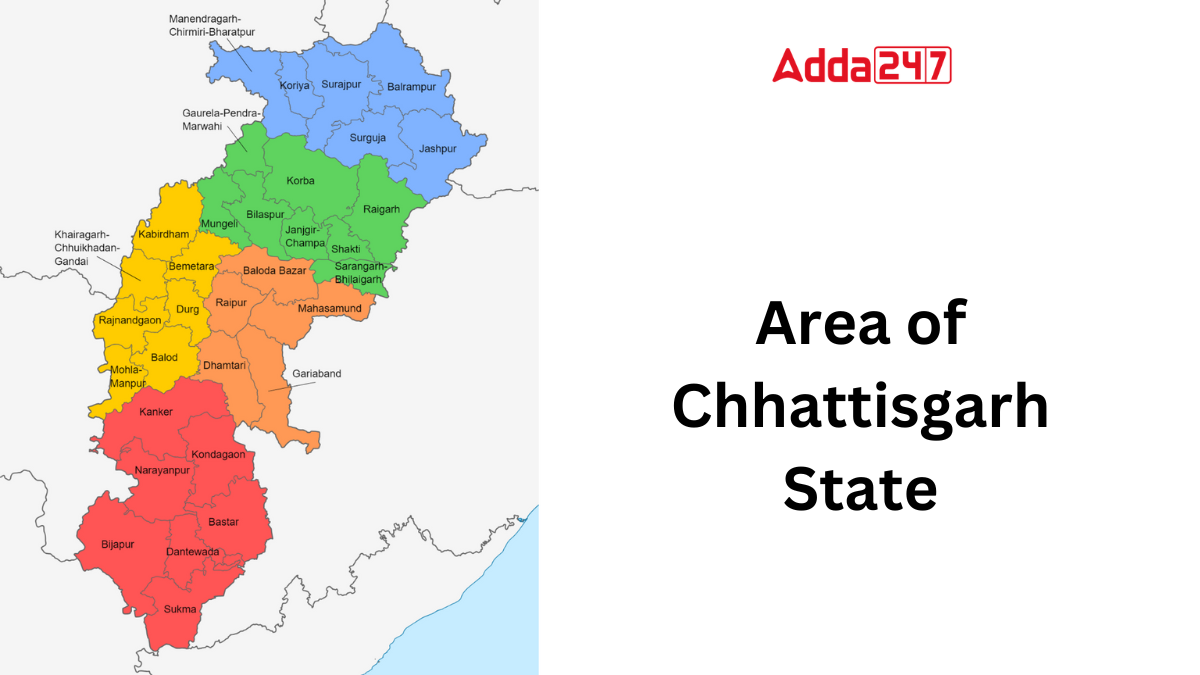Chhattisgarh, a state in central India, stands as a unique blend of rich history and vibrant culture. Formed on November 1, 2000, from the southeastern districts of Madhya Pradesh, Chhattisgarh became the 26th state of India. With its ancient name being Dakshin Kosal, the state has evolved significantly over the years, boasting a diverse landscape and a growing economy.
An Overview of Chhattisgarh State
Chhattisgarh, initially part of Madhya Pradesh, was restructured as a separate entity through the Madhya Pradesh State Reorganization Act, 2000. The state’s capital is Nava Raipur, which replaced Raipur, its earlier capital. The state’s legislature is unicameral, with 91 assembly seats, and it holds 5 Rajya Sabha and 11 Lok Sabha seats. Bilaspur is home to the state’s High Court, and the South-East Central Railway zone, headquartered in Bilaspur, serves the state.
Geographical Significance of Chhattisgarh
Chhattisgarh is situated between 17°46′ N to 24°5′ N latitude and 80°15′ E to 84°24′ E longitude. Covering an area of 135,192 square kilometers, it ranks 10th in India by area. The state is characterized by a diverse topography, with the Chhattisgarh plain being the largest geomorphic region and Jashpur-Samaripat being the smallest and highest.
Administrative Divisions of Chhattisgarh
Chhattisgarh is divided into 33 districts. At the time of its formation, the state had 16 districts. The largest district by area is Rajnandgaon, while Durg is the smallest. Bilaspur serves as the headquarters for the state’s revenue division, and Jagdalpur is home to the state’s Ethnic Museum.
Area of Chhattisgarh
The state spans 435 km from east to west and 700 to 800 km from north to south. It shares borders with seven states, with Odisha having the longest border and Andhra Pradesh the smallest. The Tropic of Cancer and the Indian Standard Time Line (IST) intersect in Chhattisgarh, with Surajpur being the meeting point of both.
Population of Chhattisgarh
According to the 2011 Census, Chhattisgarh has a total population of 25,545,198, constituting 2.11% of India’s total population. Raipur is the most populated district, while Narayanpur has the lowest population. Raipur also has the highest female population, whereas Narayanpur has the lowest.
Climate of Chhattisgarh
Chhattisgarh experiences a tropical monsoon climate. Abujhmad is considered the “Cherrapunji” of the state due to its high rainfall, while Mainpat in Surguja is the coldest place, and Champa is the hottest. The highest peak in the state is Gaurlata, standing at 1225 meters.
Education and Literacy of Chhattisgarh
The literacy rate in Chhattisgarh, as per the 2011 Census, shows a total literate population of 15,380,000, with 8,808,000 males and 6,572,000 females. The state has a robust educational infrastructure, including 253 government colleges, 257 non-government colleges, and 24 universities. Notable institutions include the All India Institute of Medical Sciences (AIIMS) in Raipur and the Indira Gandhi Agricultural University. The state also boasts several specialized universities, such as the Kushabhau Thackeray University of Journalism and Mass Communication and the Hidayatullah National Law University.





 Which City is known as the City of Bambo...
Which City is known as the City of Bambo...
 Who was the First Home Minister of India...
Who was the First Home Minister of India...







